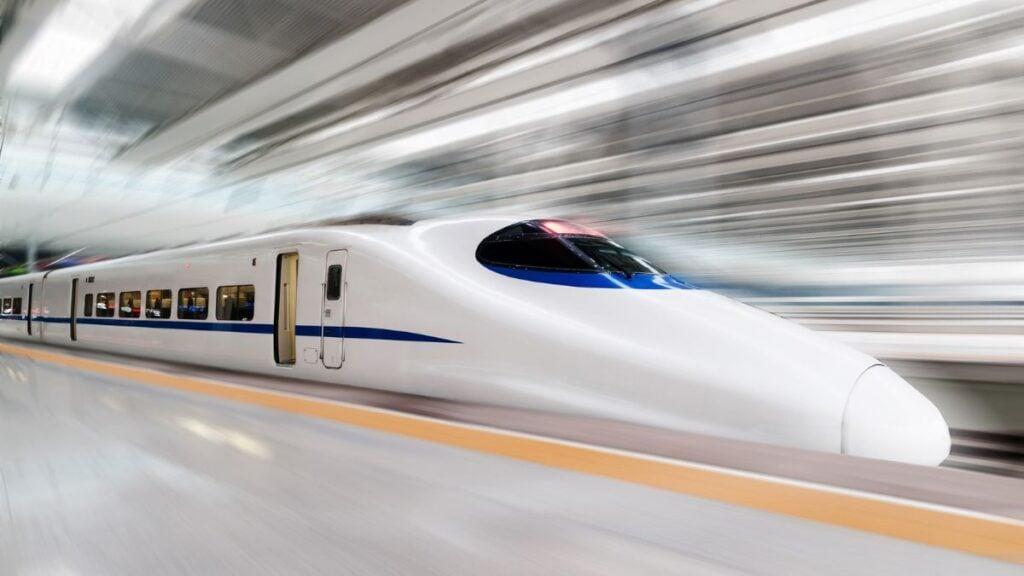Africa-Press – South-Africa. South Africa’s plans to build its first bullet train have taken a major step forward, with the expected launch in 2030, as reported by TopAuto.
The Limpopo-Gauteng Speed Train Project, which aims to connect Pretoria to Polokwane, is gradually moving forward.
First announced in 2023, the project has now entered a critical stage, with feasibility studies and environmental impact assessments underway as of mid-2025.
These studies are necessary to ensure the project is safe, economically viable, and environmentally sound.
Led by the national Department of Transport, along with the Gauteng and Limpopo provincial governments and private investors, the project’s development is focused on securing funding and finalising the technical groundwork.
One of the key challenges the government identified is land acquisition along the planned route.
However, successful negotiations with communities and landowners would allow for the railway’s construction to move forward.
If all goes to plan, construction is expected to begin in late 2026, with the first trains running by 2030.
Once completed, the bullet train will significantly reduce travel time between the two provinces. The current five-to-six-hour car journey from Pretoria to Polokwane would shrink to just 90 minutes by rail.
The 500km route will include multiple stops along its path, extending beyond Polokwane. Planned stations include Hammanskraal, Bela-Bela, Mokopane, Louis Trichardt, and Musina.
The first phase will cover the Pretoria-to-Polokwane stretch, while the second phase will handle the route’s expansion to these other key locations.
The train is expected to travel at an average speed of approximately 177 km/h between Pretoria and Polokwane, and exceed 200 km/h on specific segments.
While not matching the speeds of the fastest international high-speed rail (HSR) systems, the train will still technically qualify as a bullet train under global definitions. This project forms part of South Africa’s broader rail infrastructure ambitions.
Gauteng has already committed R120 billion towards expanding its rail network over the next five years, which includes adding six new areas and increasing the Gautrain’s network from 80km to 230km. The Limpopo-Gauteng line will run alongside this expansion.
Plans struggle to leave the drawing board
Transport Minister Barbara Creecy
Transport Minister Barbara Creecy has said that revitalising South Africa’s transport sector, particularly rail, is a top priority.
The government has set targets that include increasing Transnet’s annual rail freight from 149 million to 250 million tonnes and restoring PRASA’s commuter network to handle 600 million passenger journeys annually by 2030.
However, despite these plans, South Africans have seen multiple promises around rail and public transport development over the years, with many plans struggling to leave the drawing board.
The high-speed rail framework, for instance, was first discussed as far back as 2010 under former transport minister Sibusiso Ndebele.
President Ramaphosa reiterated the idea in his 2019 State of the Nation Address, imagining bullet trains running from Johannesburg to Musina, with further connections to cities like Buffalo City and eThekwini.
In 2022, then-transport minister Fikile Mbalula gazetted a National Rail Policy White Paper that formally introduced high-speed rail corridors as a key development objective.
This policy was approved by Cabinet in November 2023, and in his 2024 State of the Nation Address, Ramaphosa confirmed the government would now prioritise feasibility studies.
These studies are for key routes, including Johannesburg to Durban, Johannesburg to Polokwane and Musina, and Johannesburg to Mbombela.
While the Limpopo-Gauteng Speed Train is a significant part of these plans, the Johannesburg-Durban line has been identified as particularly strategic due to its potential to compete with airlines on that route.
Cost estimates for that line alone hover around $30 billion (R530 billion), raising serious questions about funding.
The government has insisted it would fully fund the Limpopo-Gauteng project, but with South Africa’s fiscal constraints, external support will be crucial.
Private investors and foreign partners like China, who have expressed interest in investing in the Johannesburg-Durban line, are expected to play a role.
For More News And Analysis About South-Africa Follow Africa-Press






